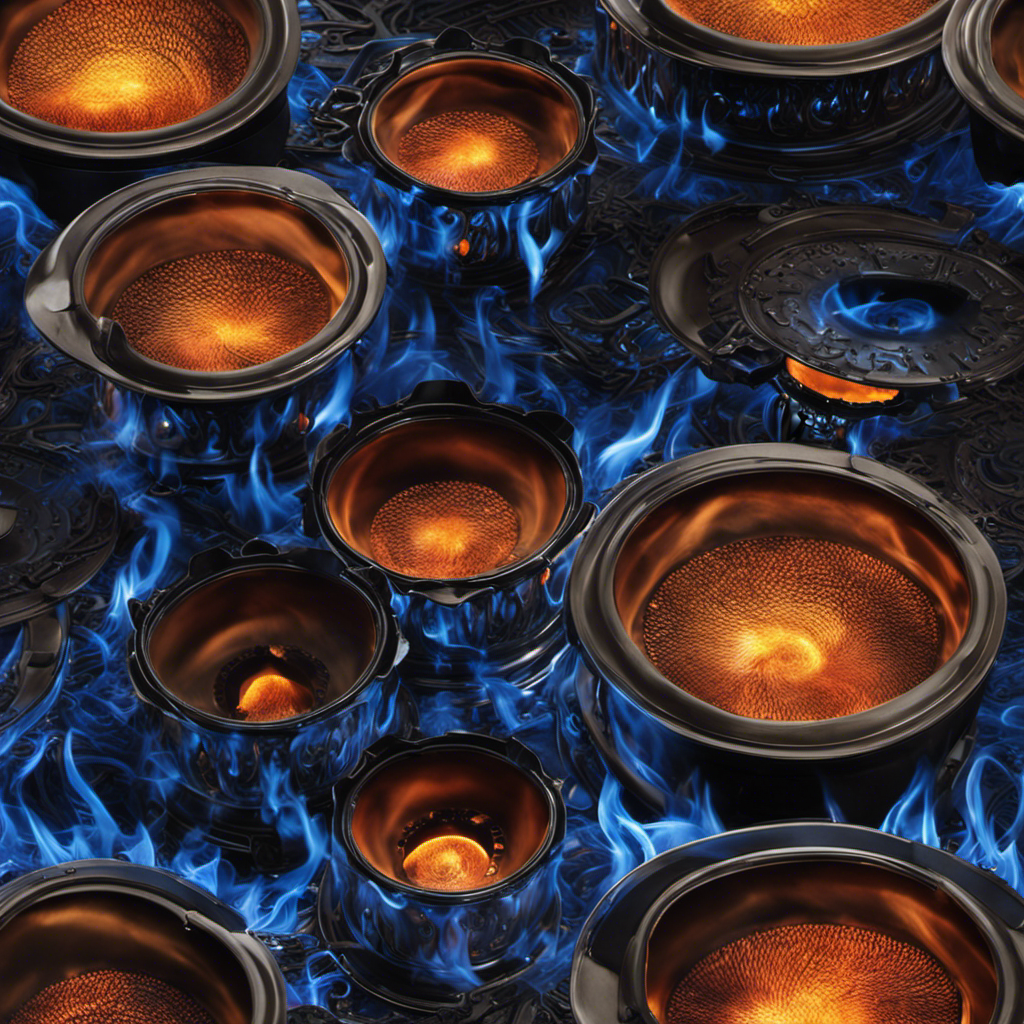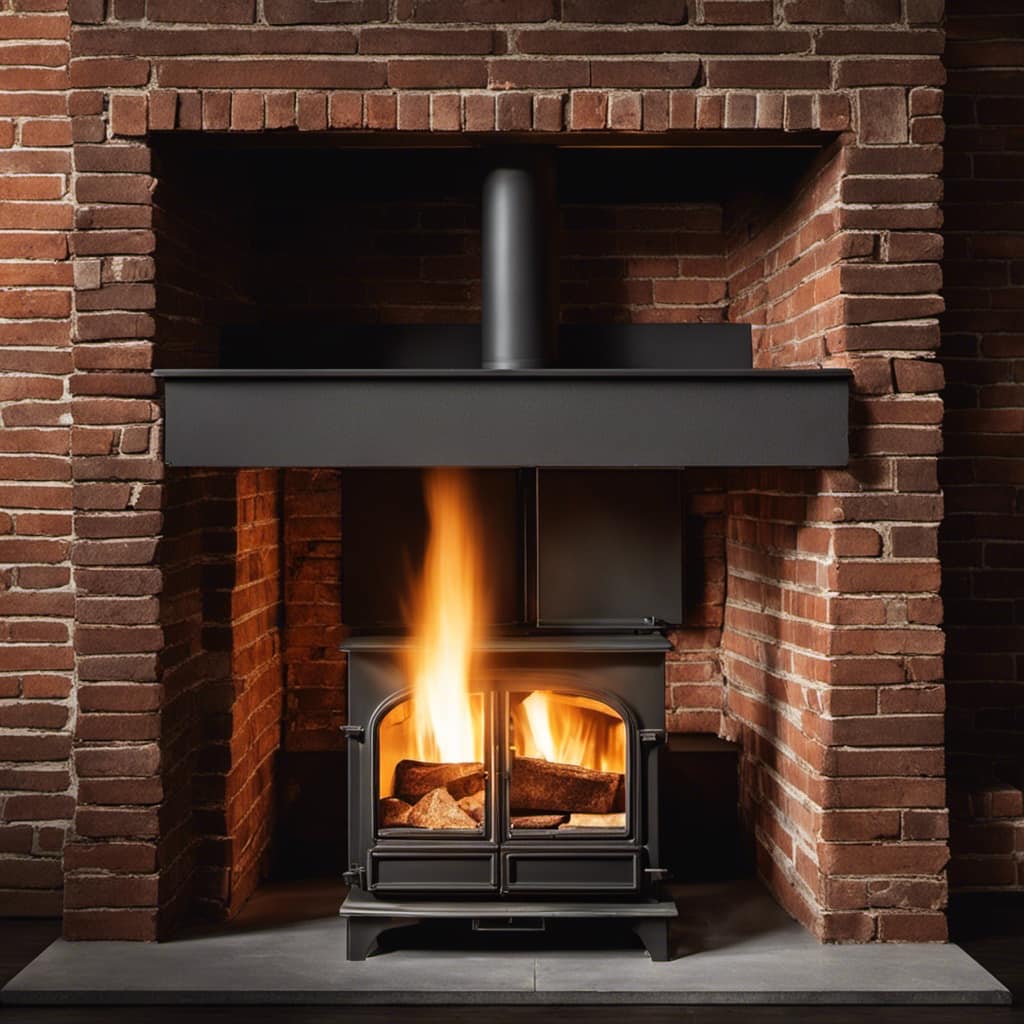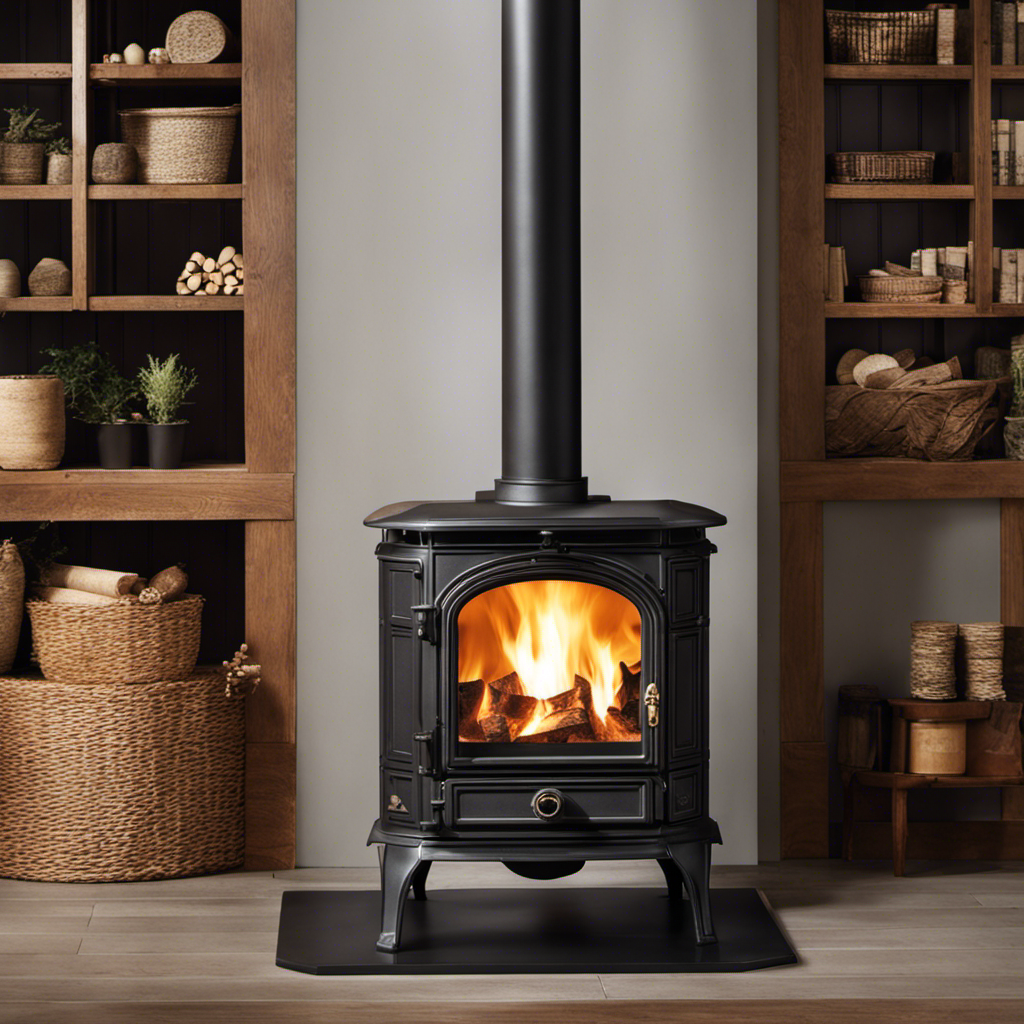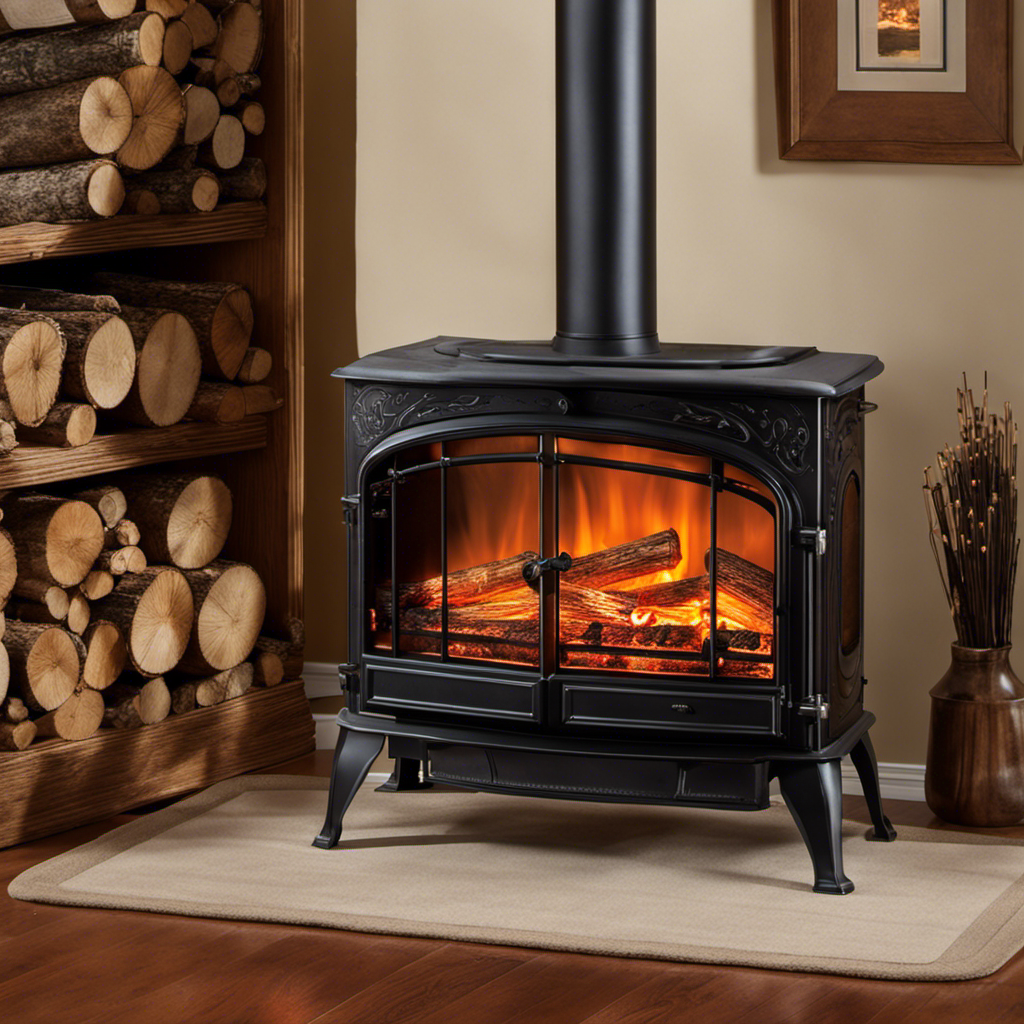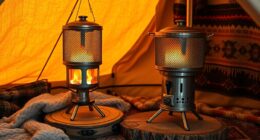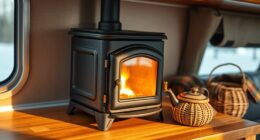While I bask in the cozy warmth emanating from my wood stove, I can’t help but ponder: is there a possibility of a carbon monoxide leak?
This invisible gas is a silent killer, and it’s crucial to know the signs.
In this article, I’ll guide you through the dangers of carbon monoxide leaks, the symptoms to watch out for, and the steps to prevent them.
Stay tuned to learn how to keep your home safe and secure from this deadly threat.
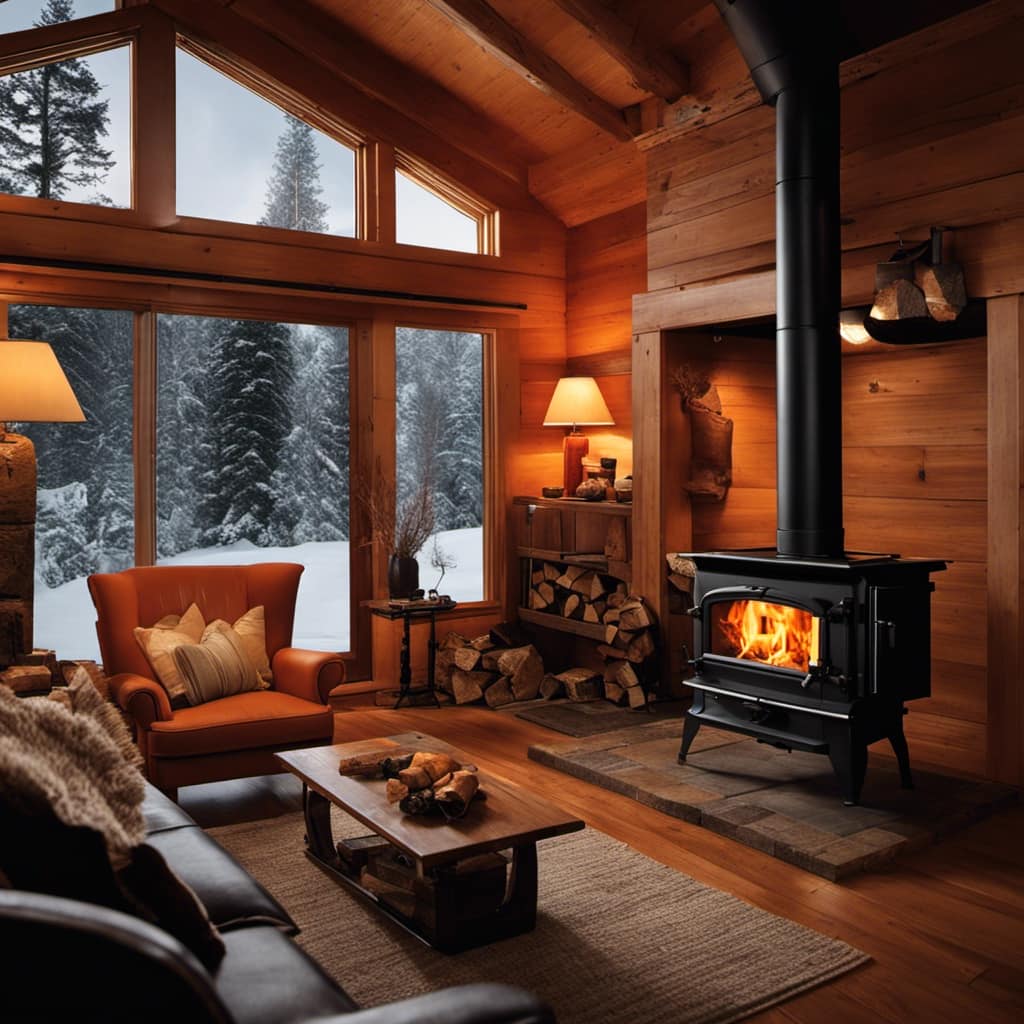
Key Takeaways
- Carbon monoxide is a colorless, odorless gas that can be deadly if inhaled in large amounts.
- Common signs and symptoms of carbon monoxide leakage include feeling lightheaded, experiencing headaches, feeling nauseous, and having confusion.
- Testing for carbon monoxide in your home is crucial for your safety, and regular maintenance and inspection of wood stoves can help prevent leaks.
- If you suspect a carbon monoxide leak from your wood stove, immediately evacuate your home, call the fire department, and install carbon monoxide detectors for early warning signs.
Understanding the Dangers of Carbon Monoxide Leaks
I need to educate myself about the dangers of carbon monoxide leaks.
Carbon monoxide is a colorless, odorless gas that can be deadly if inhaled in large amounts. It’s produced by the incomplete combustion of fuels such as wood, gas, and oil.
Carbon monoxide poisoning can have severe effects on the body, including headaches, dizziness, nausea, and confusion. In extreme cases, it can lead to unconsciousness and even death.
Long-term exposure to low levels of carbon monoxide can also have detrimental effects on our health, such as damage to the central nervous system, heart, and lungs.
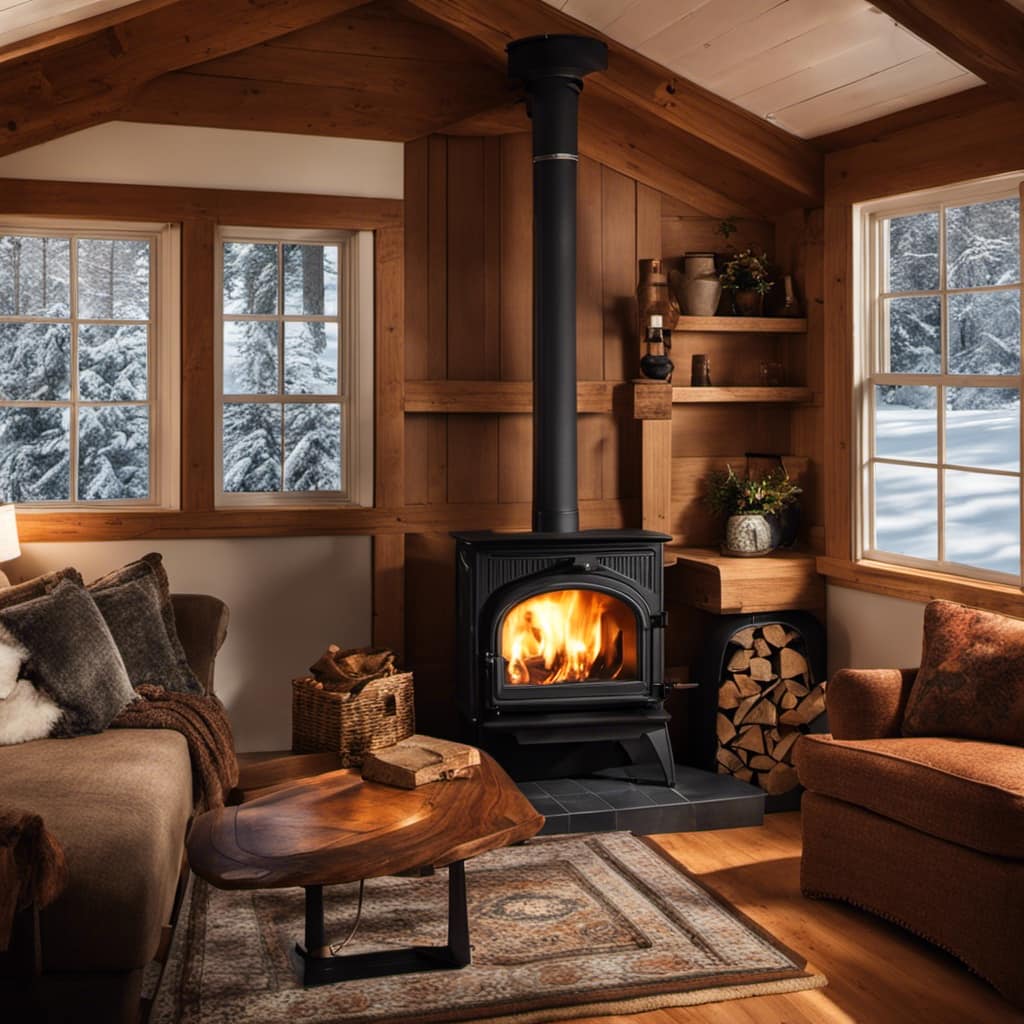
It’s important to be aware of the signs of carbon monoxide leaks and to have carbon monoxide detectors installed in our homes to ensure our safety.
Common Signs and Symptoms of Carbon Monoxide Leakage
One common sign of carbon monoxide leakage is feeling lightheaded and experiencing a headache, while another is feeling nauseous and having confusion. These symptoms occur because carbon monoxide binds to hemoglobin in the blood, preventing oxygen from being transported to vital organs and tissues. As a result, the body’s cells are deprived of oxygen, leading to various health risks, including organ damage and even death. To illustrate the severity of carbon monoxide poisoning, consider the following table:
| Symptoms | Description |
|---|---|
| Lightheadedness | Feeling dizzy or faint |
| Headache | Aching pain in the head |
| Nausea | Feeling sick to the stomach |
| Confusion | Difficulty thinking clearly |
It is essential to be aware of these signs to protect yourself and your loved ones. Transitioning into the subsequent section about testing for carbon monoxide in your home, it is crucial to take proactive measures to ensure your safety.
Testing for Carbon Monoxide in Your Home
There are several reliable carbon monoxide detectors available on the market to ensure the safety of your home. When it comes to testing for carbon monoxide in your home, it’s essential to have the right tools and knowledge.
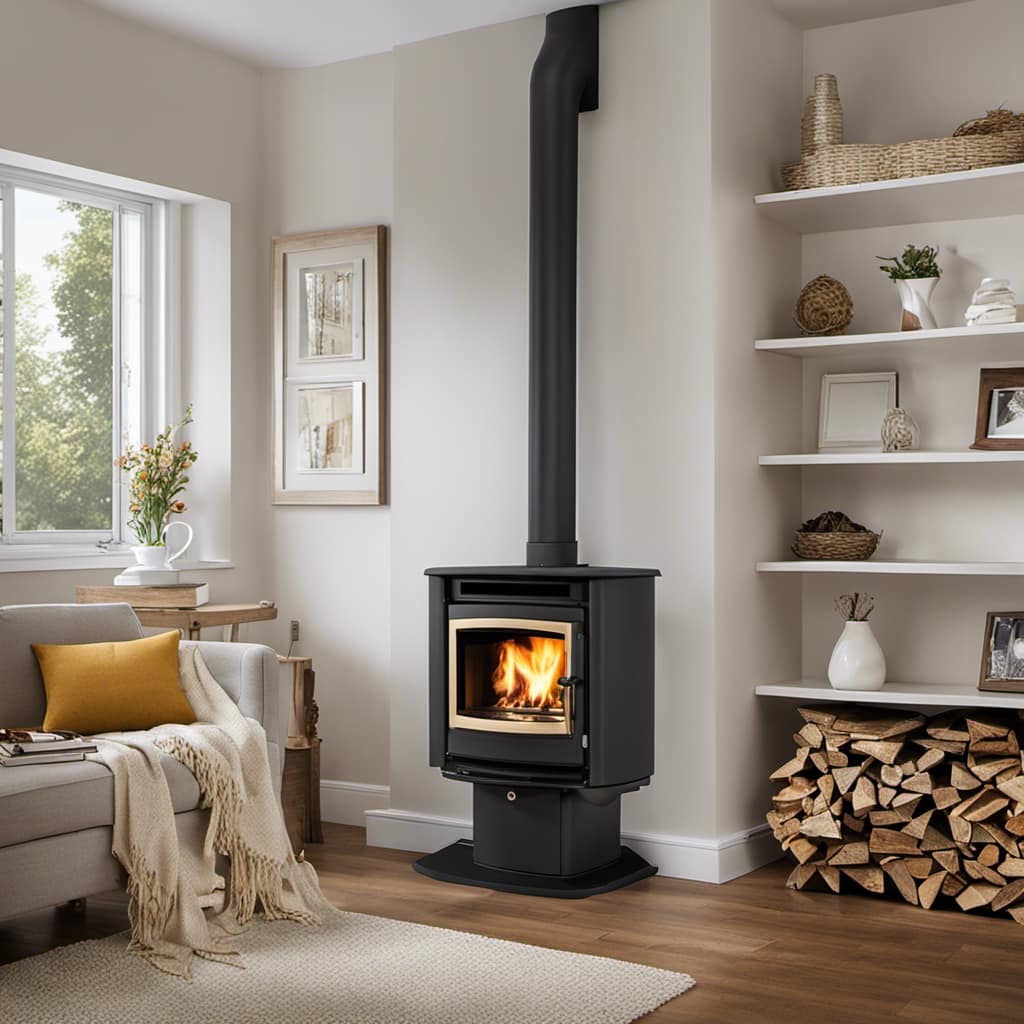
Here are some key steps to consider:
- Choose a carbon monoxide detector that meets industry standards and has a long-lasting battery.
- Install the detector in a central location on each floor of your home, including outside sleeping areas.
- Regularly test the detectors to ensure they’re functioning properly.
- Consider getting a professional inspection to assess any potential sources of carbon monoxide, such as gas appliances or a wood stove.
Preventing Carbon Monoxide Leaks From Your Wood Stove
To prevent carbon monoxide leaks from your wood stove, it’s important to regularly inspect and maintain the stove, as well as ensure proper ventilation and installation. Proper ventilation is crucial in preventing the buildup of carbon monoxide in your home. Make sure that your wood stove is installed correctly, with the chimney properly connected and the flue open. Regularly check for any cracks or leaks in the stove, as well as the chimney and flue. Clean the stove and chimney regularly to prevent any blockages. Additionally, always use dry and well-seasoned wood to minimize the production of carbon monoxide. By following these steps, you can greatly reduce the risk of carbon monoxide leaks from your wood stove.
Now, let’s discuss what to do if you suspect a carbon monoxide leak from your wood stove.
What to Do if You Suspect a Carbon Monoxide Leak From Your Wood Stove
I should immediately evacuate my home and call the fire department if I suspect a carbon monoxide leak from my wood stove. Carbon monoxide (CO) is a colorless, odorless gas that can be deadly if inhaled in high concentrations. To ensure the safety of your household, it’s essential to be aware of the signs of a potential leak and take prompt action.

Here are some important steps to follow in case of a suspected carbon monoxide leak:
- Evacuate the premises immediately: Move everyone outside to fresh air and away from the source of the leak.
- Call the fire department: Dial emergency services to report the suspected leak and seek professional assistance.
- Avoid re-entering the premises: Wait until the fire department arrives and gives clearance before returning inside.
- Install carbon monoxide detectors: These devices can provide early warning signs of a leak and allow you to take appropriate action promptly.
Frequently Asked Questions
How Often Should I Have My Wood Stove Inspected for Potential Carbon Monoxide Leaks?
I typically have my wood stove inspected for potential carbon monoxide leaks every year. It’s important to ensure the safety of your home and family. Signs of carbon monoxide leaks in wood stoves include headaches, dizziness, and flu-like symptoms.
Can a Carbon Monoxide Detector Be Used to Detect Leaks From a Wood Stove?
Yes, a carbon monoxide detector can be used to detect leaks from a wood stove. It’s important to monitor for symptoms of carbon monoxide poisoning and signs of a malfunctioning stove to ensure safety.
Are There Any Specific Actions I Should Take if I Have Young Children or Pets in the House and Suspect a Carbon Monoxide Leak From My Wood Stove?
If I suspect a carbon monoxide leak from my wood stove and have young children or pets in the house, I should immediately evacuate them and seek fresh air. Call emergency services and have the stove inspected by a professional.
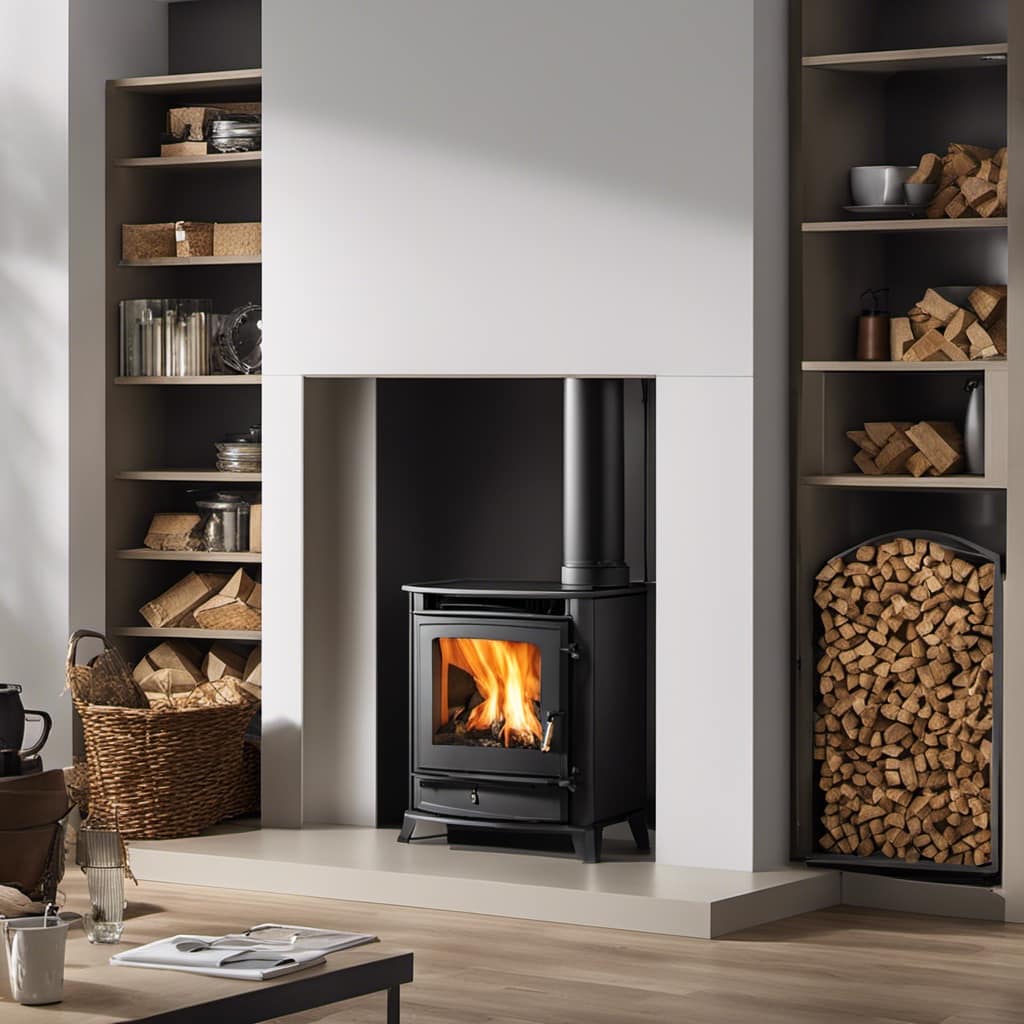
What Are the Potential Health Effects of Long-Term Exposure to Low Levels of Carbon Monoxide From a Wood Stove?
Long-term exposure to low levels of carbon monoxide from a wood stove can have serious health risks. These include headaches, dizziness, nausea, confusion, and even death. It is important to ensure proper ventilation and regular maintenance of your wood stove to minimize these risks.
Is It Possible for Carbon Monoxide to Leak From a Wood Stove Even if It Is Properly Installed and Maintained?
It is possible for carbon monoxide to leak from a properly installed and maintained wood stove. Signs of leaks include poor wood stove ventilation, headaches, nausea, dizziness, and confusion. Regular maintenance and carbon monoxide detectors can help prevent leaks.
Conclusion
In conclusion, it’s crucial for wood stove owners to be aware of the signs and symptoms of carbon monoxide leaks in order to protect themselves and their loved ones.
Regular testing for carbon monoxide in the home is essential for early detection of any potential leaks.
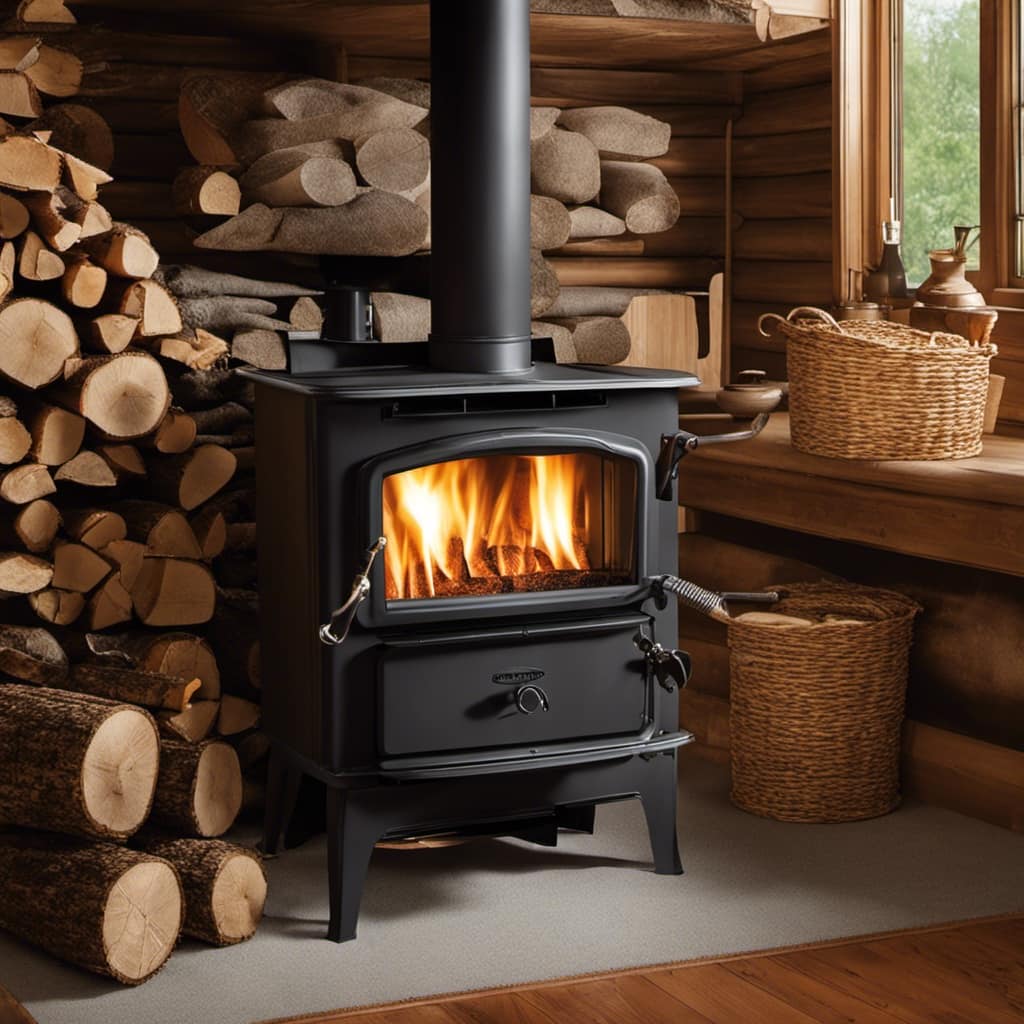
By following proper maintenance and ventilation practices, wood stove owners can greatly reduce the risk of carbon monoxide leaks.
If a leak is suspected, it’s important to take immediate action and seek professional assistance to ensure safety.
Growing up surrounded by the vast beauty of nature, Sierra was always drawn to the call of the wild. While others sought the comfort of the familiar, she ventured out, embracing the unpredictable and finding stories in the heartbeat of nature.
At the epicenter of every remarkable venture lies a dynamic team—a fusion of diverse talents, visions, and passions. The essence of Best Small Wood Stoves is crafted and refined by such a trio: Sierra, Logan, and Terra. Their collective expertise has transformed the platform into a leading authority on small wood stoves, radiating warmth and knowledge in equal measure.




